Press Release Samples
-
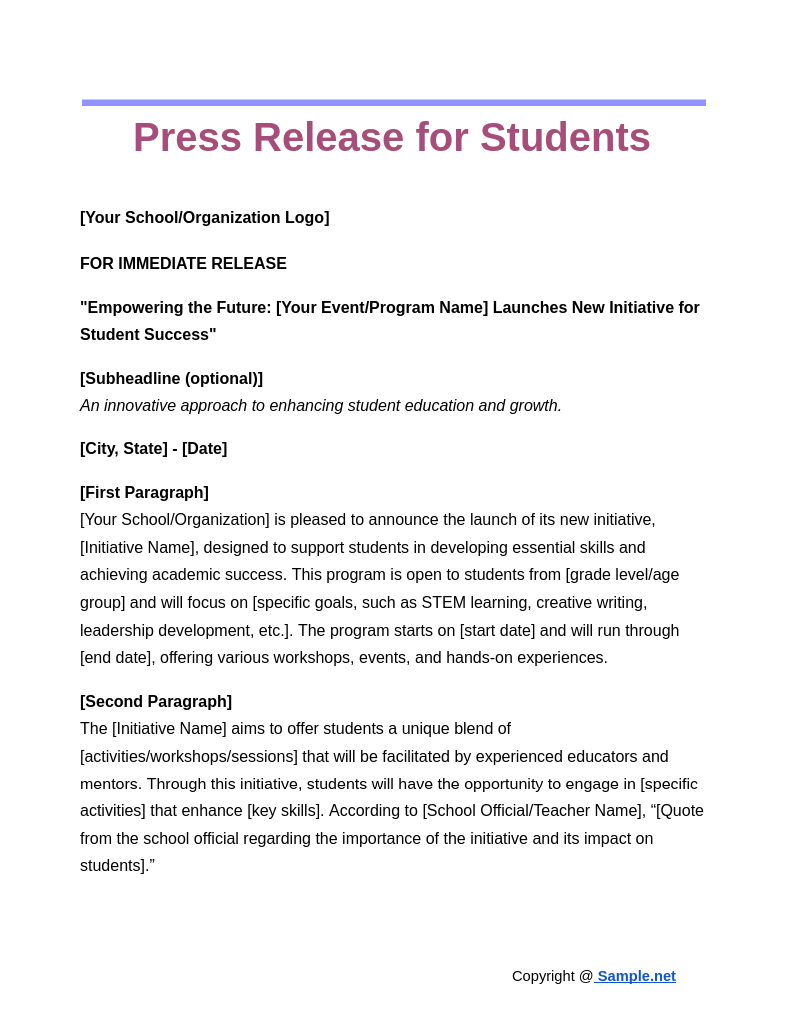
Press Release for Students
download now -
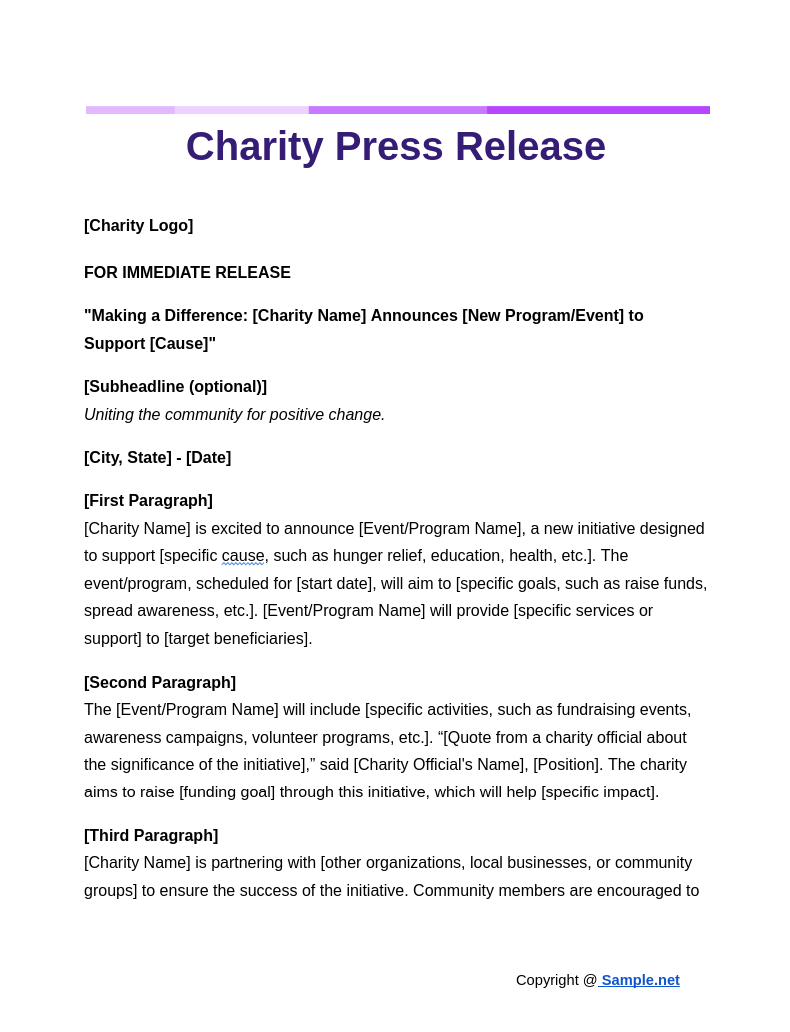
Charity Press Release
download now -
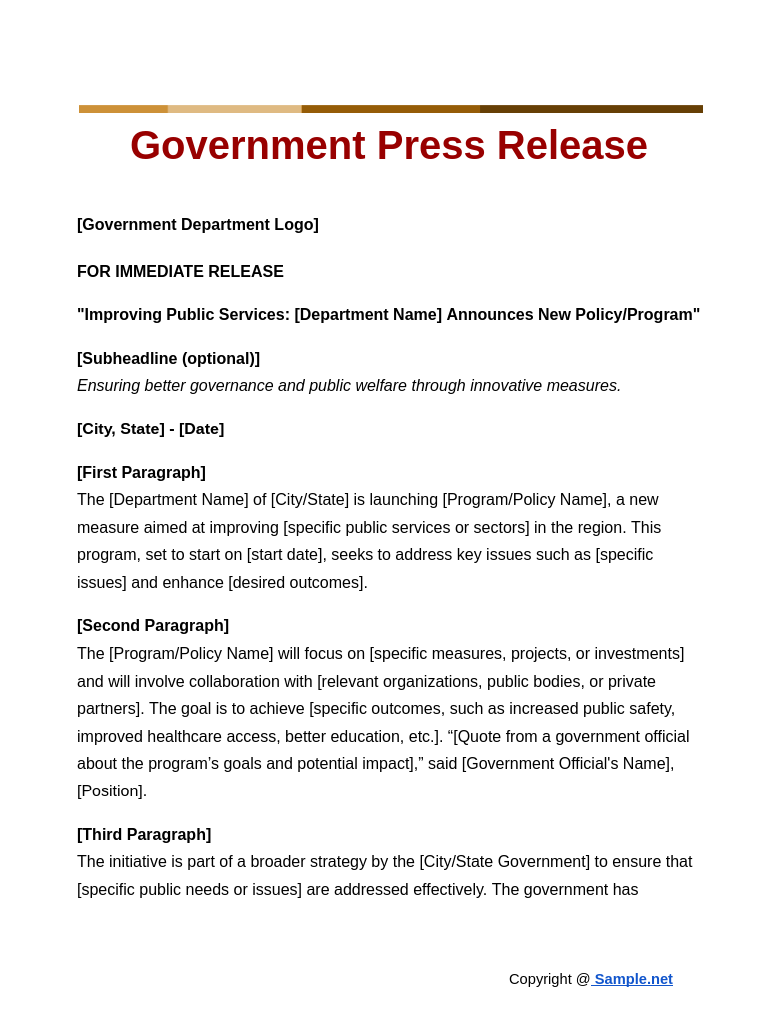
Government Press Release
download now -
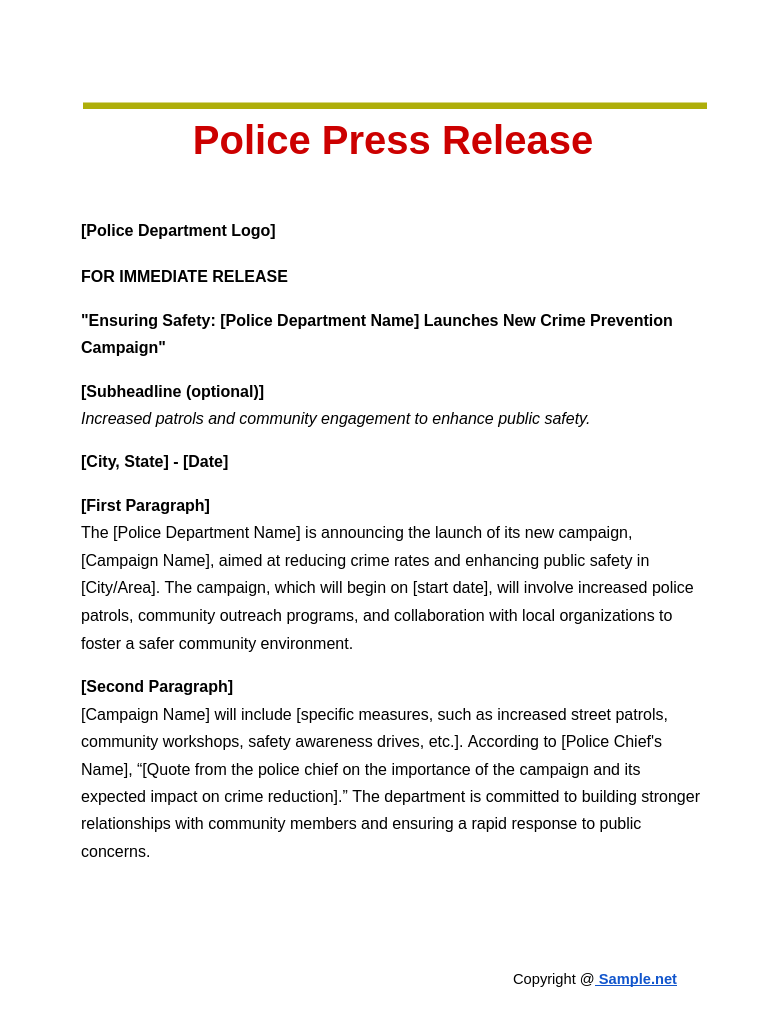
Police Press Release
download now -
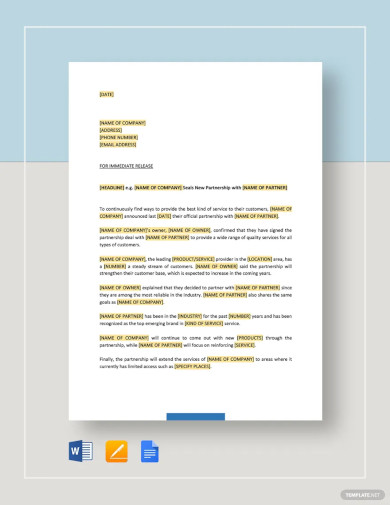
Press Release New Partnership Collaboration Template
download now -
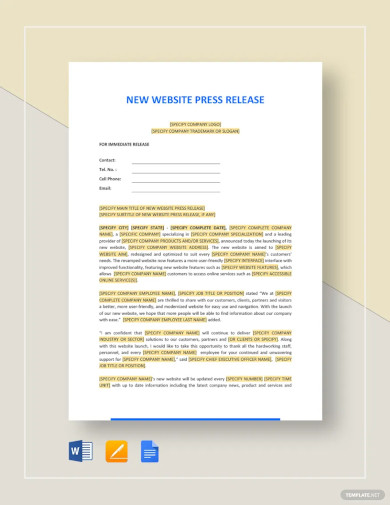
New Website Press Release Template
download now -
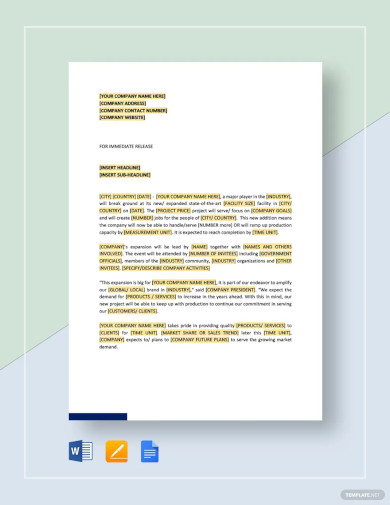
Press Release Company Has Expanded its Facilities Template
download now -
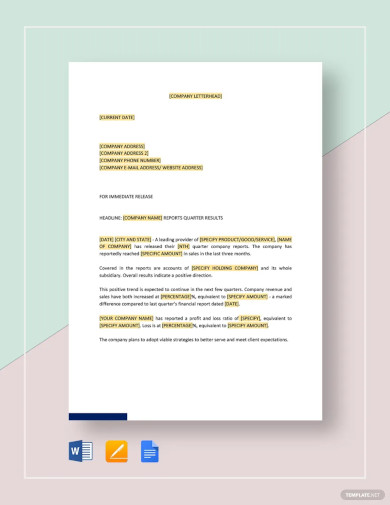
Press Release Company Reports Quarter Results Template
download now -
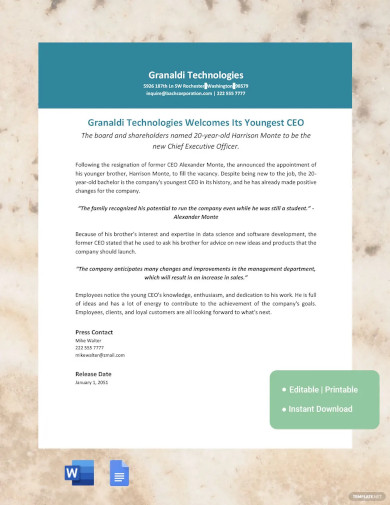
New Hire Press Release Template
download now -
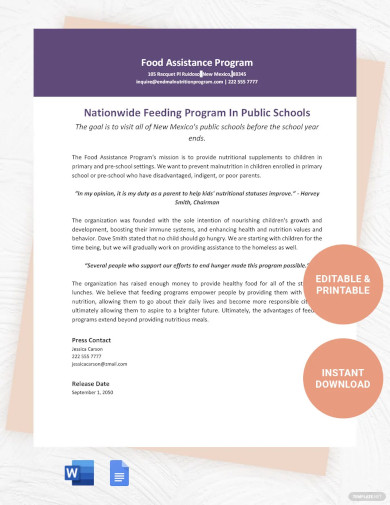
Non Profit Press Release Template
download now -
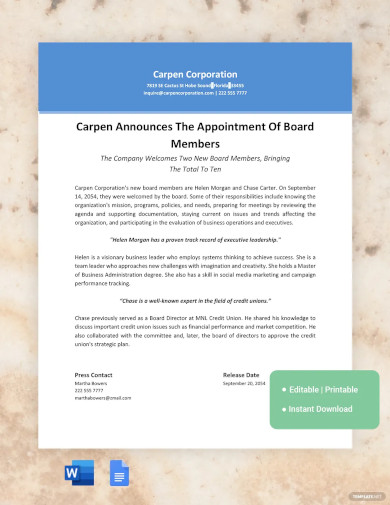
New Board Member Press Release Template
download now -
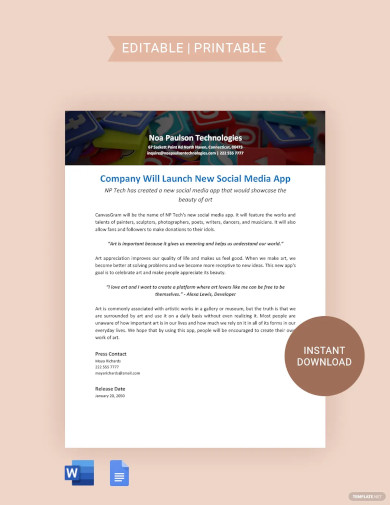
Social Media Press Release Template
download now -
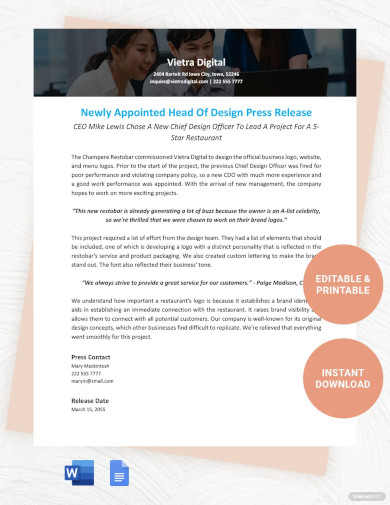
New Employee Press Release Template
download now -
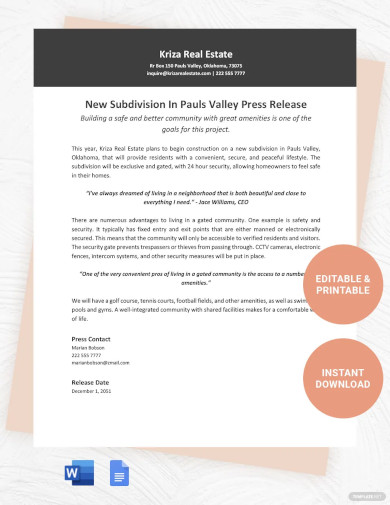
Real Estate Press Release Template
download now -
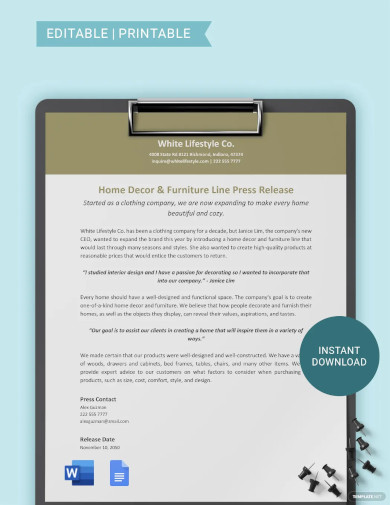
New Product Press Release Template
download now -
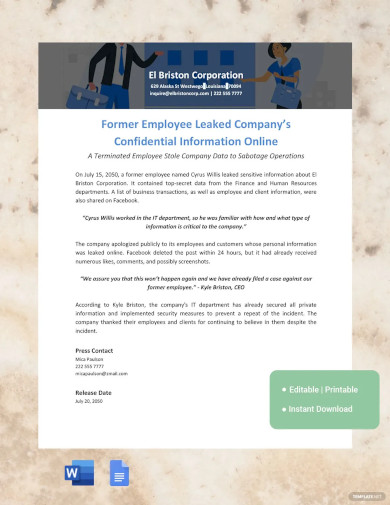
Data Breach Press Release Template
download now -
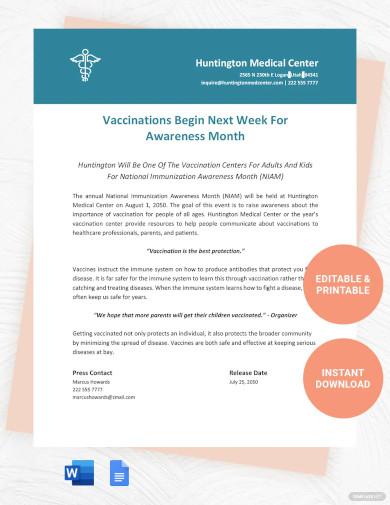
Public Health Press Release Template
download now -
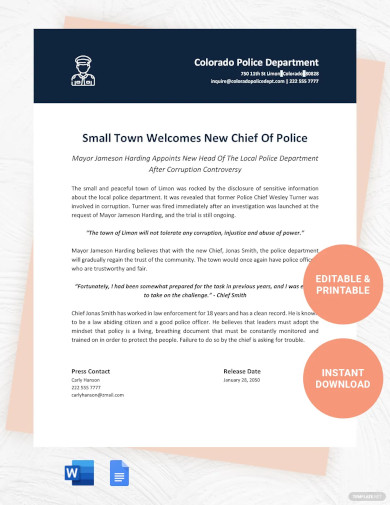
Law Enforcement Press Release Template
download now -
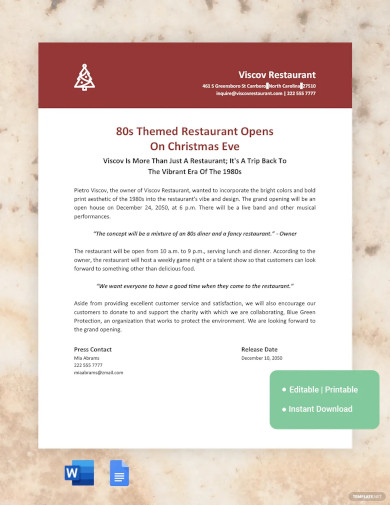
Grand Opening Press Release Template
download now -
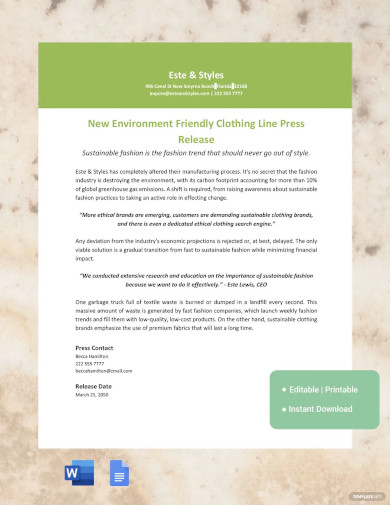
Fashion Press Release Template
download now -
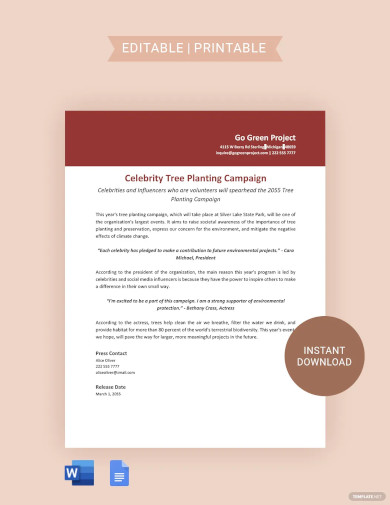
Event Press Release Template
download now -
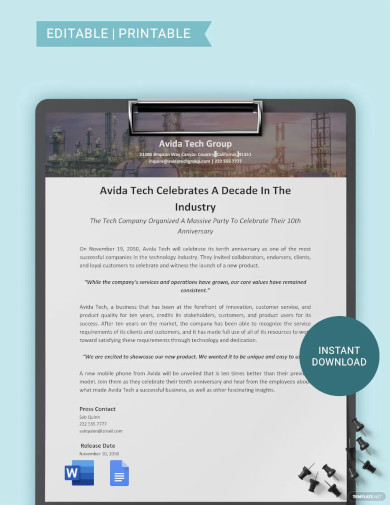
Company Anniversary Press Release Template
download now -
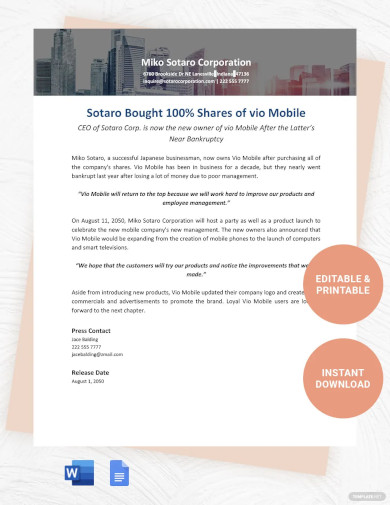
Business Acquisition Press Release Template
download now -
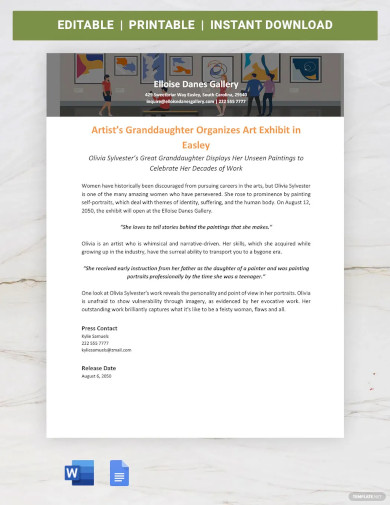
Art Exhibition Press Release Template
download now -

Company Press Release for Winning Award Template
download now -
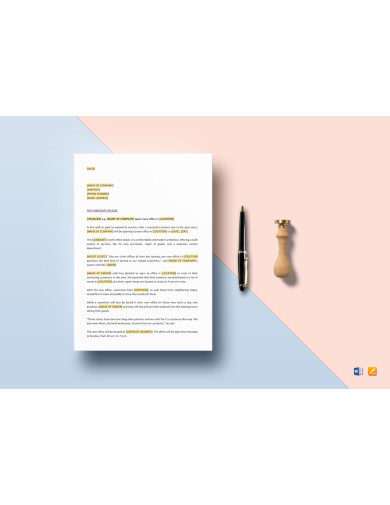
Press Release for New Office Opening Template
download now -
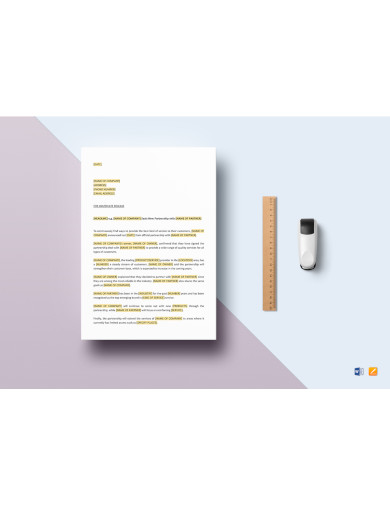
Press Release for New Partnership-Collaboration Template
download now -
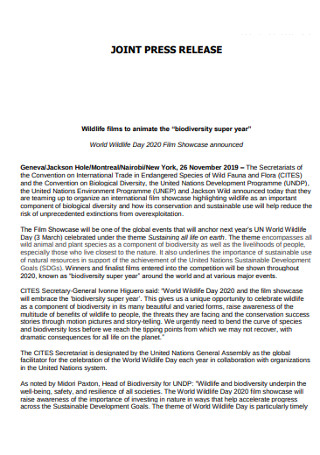
Joint Event Press Release
download now -
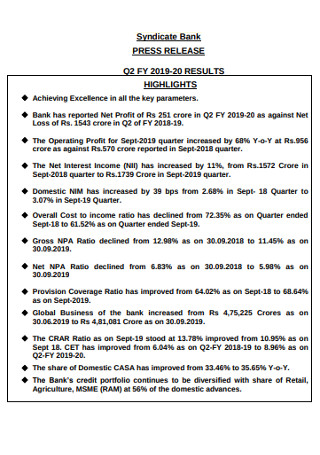
Fashion Press Release Example
download now -
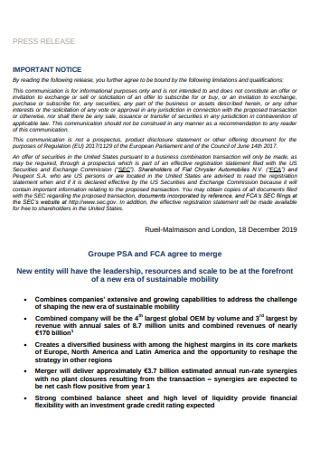
Press Release Design Important Notice
download now -
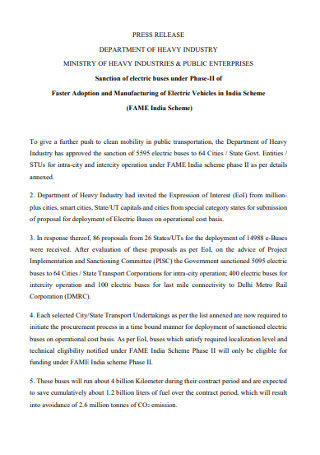
Heavy Newspaper Industry Press Release Template
download now -
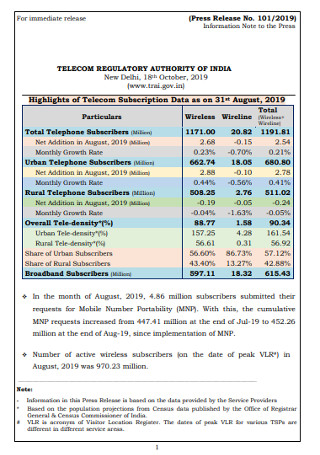
Telecom Media Press Release Example
download now -
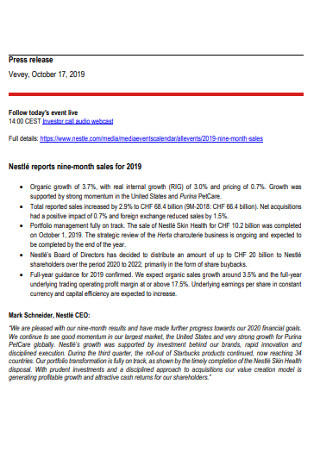
Company Creative Sales Press Release
download now -
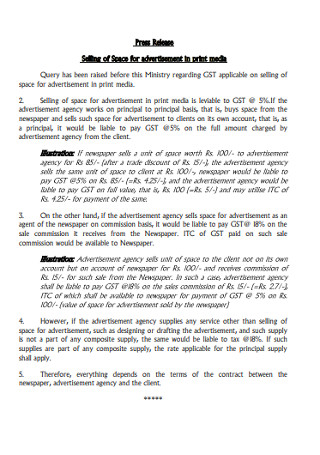
Email Selling of Space for advertisement Press Release
download now -
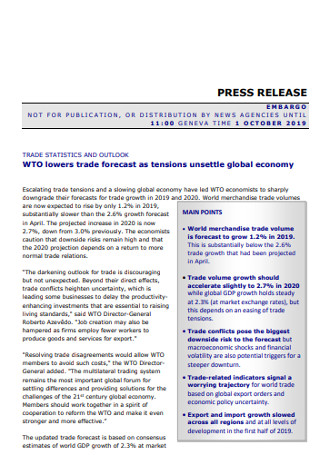
Music Trade Organization Press Release
download now -
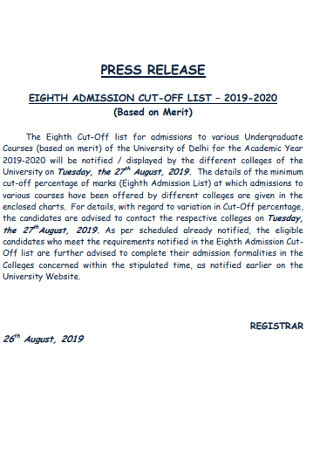
Eighth Admission Cut Off List Press Release
download now -
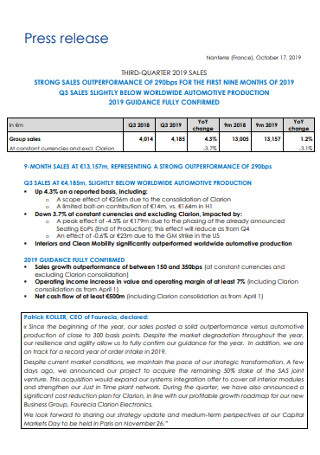
Sample School Press Release
download now -

Nonprofit Meeting Press Release
download now -
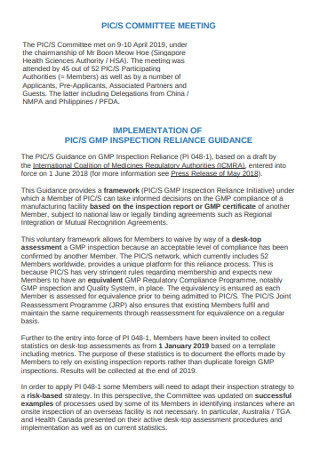
Committee Icon Meeting Press Release
download now -
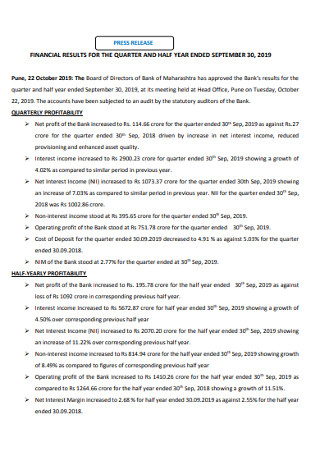
Bank Social Media Financial Results Press Release
download now -
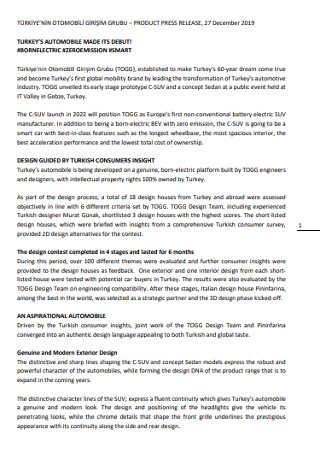
Product Restaurant Press Release
download now -

Standard Partnership Press Release
download now -
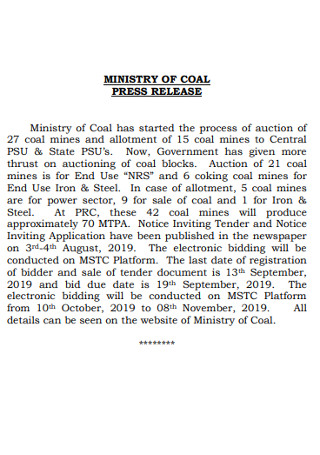
Ministry of Coal Promotion Press Release
download now -
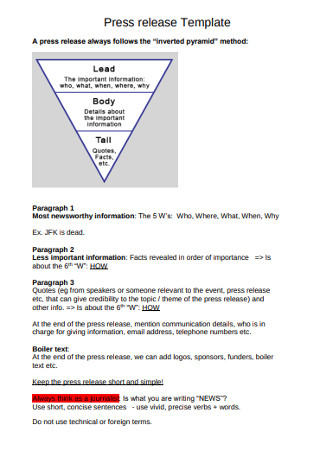
Press Release Template
download now -
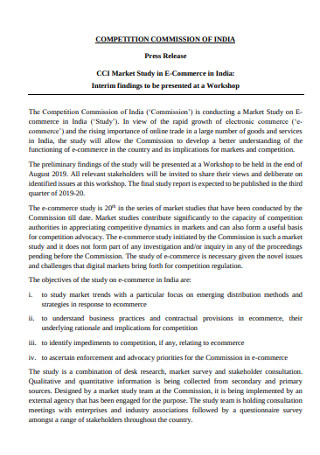
Market Study Press Release
download now -
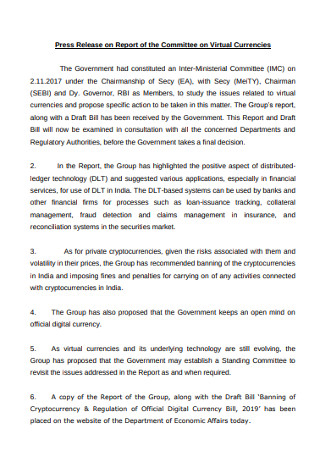
Press Release on Committee Report
download now -

Art and Science Project Press Release
download now -
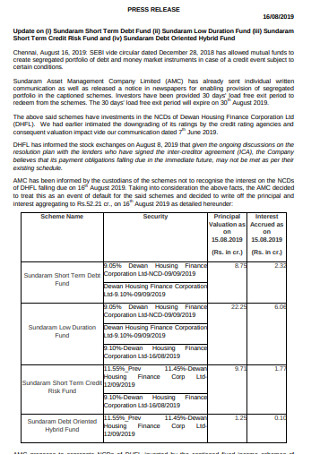
Basic Press Release
download now -
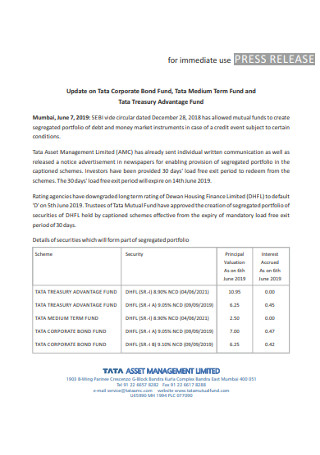
Corporate Immediate Press Release
download now -
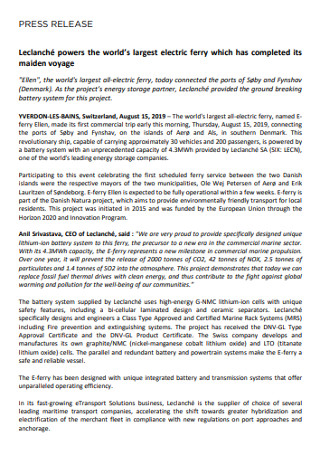
Simple Press Release
download now -
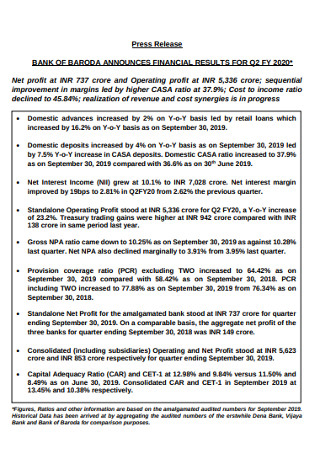
Sample Bank Press Release
download now -
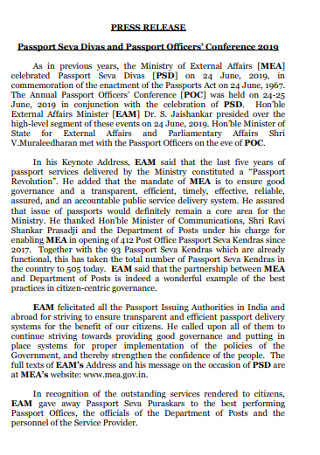
Passport Officers Press Release
download now -
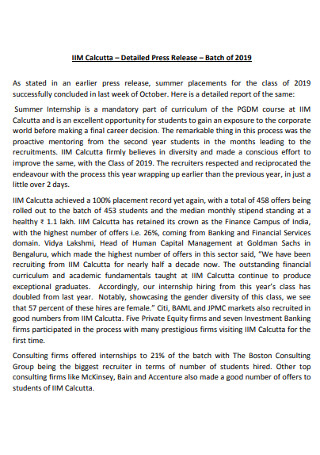
Detailed Press Release
download now -
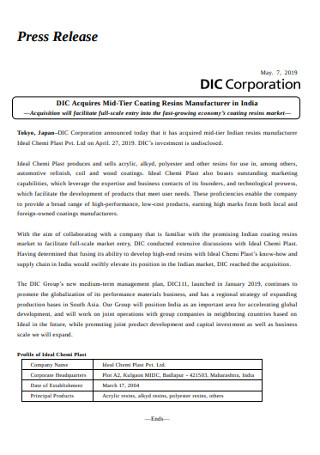
Sample Corporation Press Release
download now -
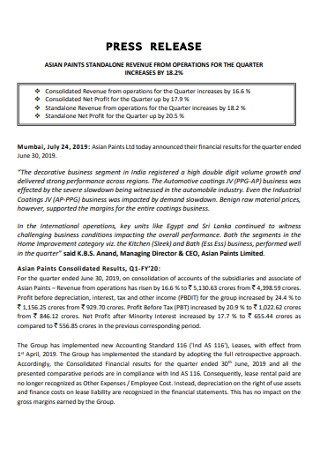
Paints Revenue Press Release
download now -
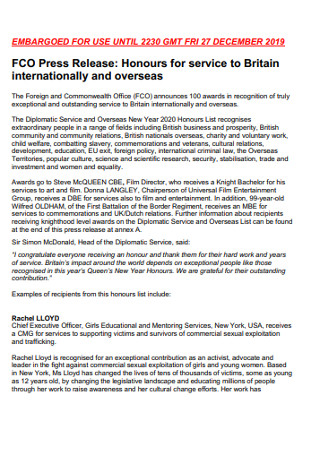
Commonwealth Office Press Release
download now -
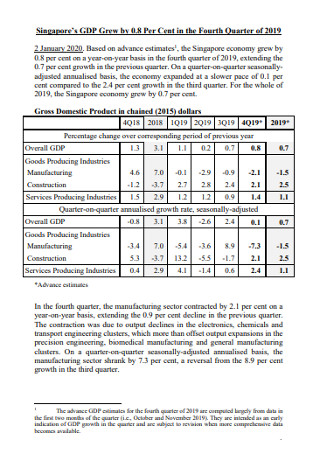
Press Release for Industry Products
download now -
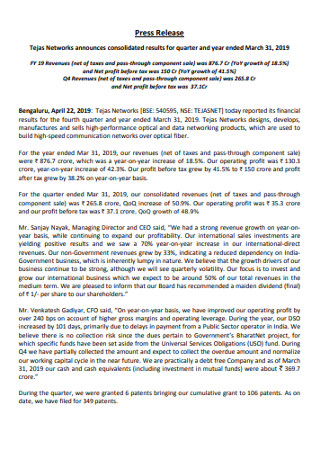
Networks announces Press Release Template
download now -
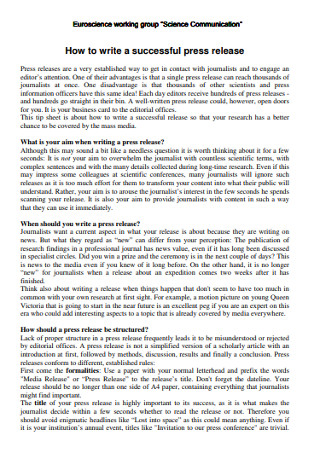
Press Release for Science Communication
download now -
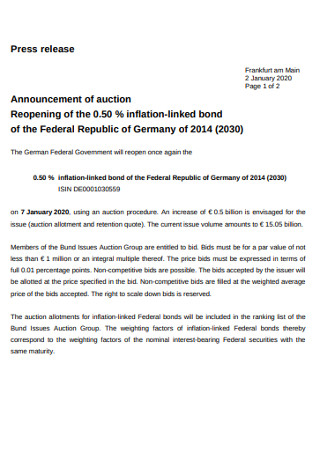
Announcement of Auction Press Release
download now -
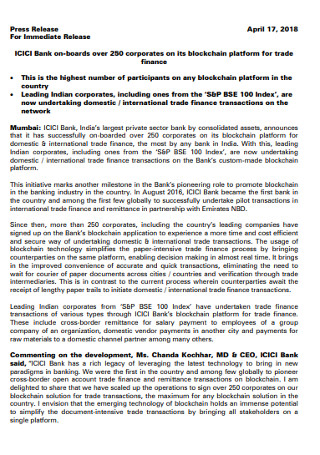
Press Release for Immediate Release Template
download now -
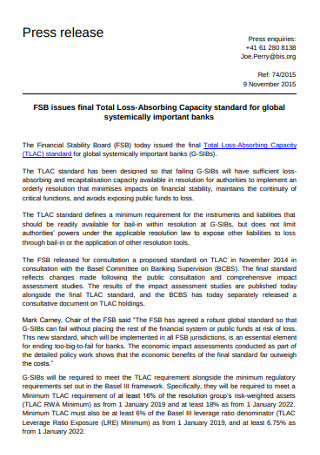
Sample Board Press Release Example
download now -
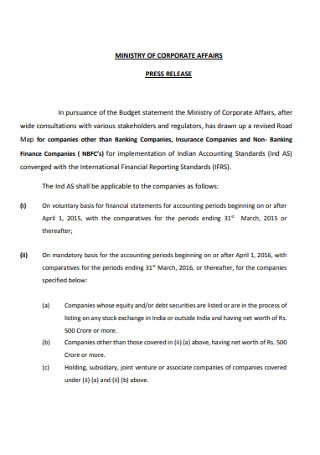
Ministry of Corporate Affairs Press Release
download now -

Formal Press Release Example
download now -
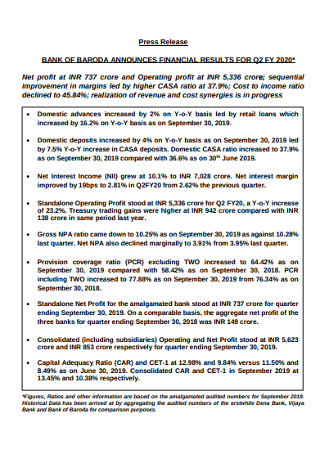
Bank Financial Press Release Template
download now -
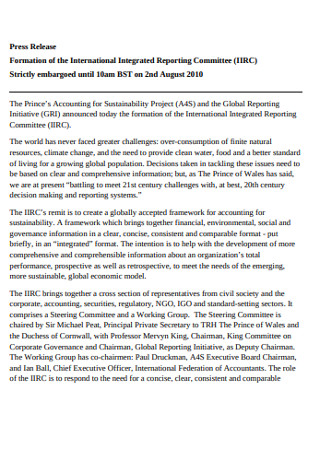
Basic Press Report Release
download now -
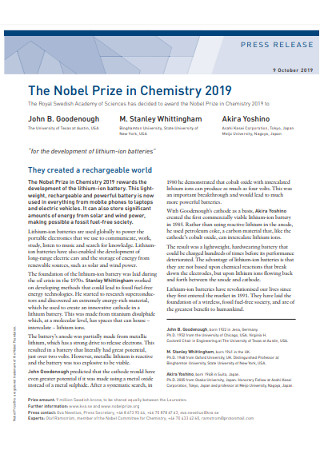
Nobel Prize Press Release Example
download now -
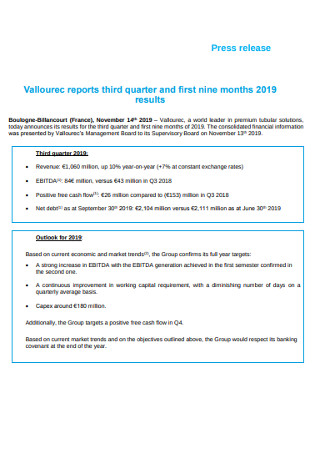
First Nine Months Press Release
download now -

Annual Press Release Template
download now -
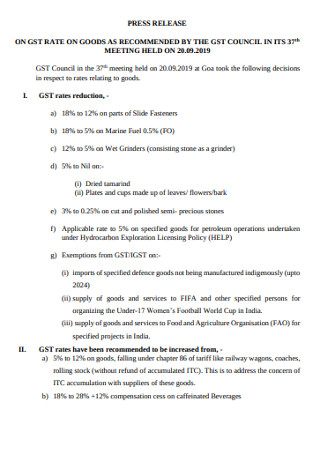
Sample Meeting Press Release Example
download now -
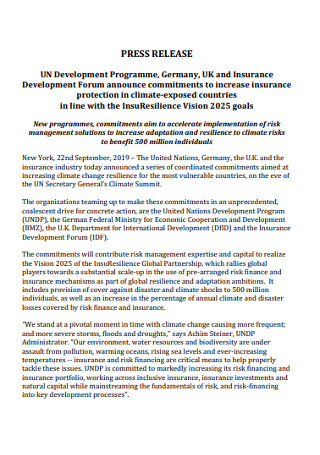
Press Release Format
download now -
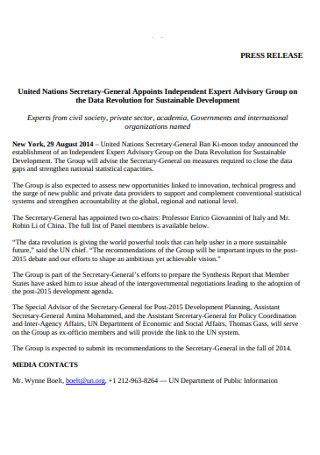
Secretary-General Press Release
download now -
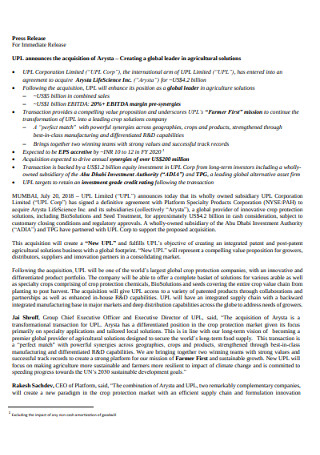
Printable Press Release Example
download now -

Conference Press Release
download now -

Press Release Request Form
download now -

Sample News and Press Release Template
download now -
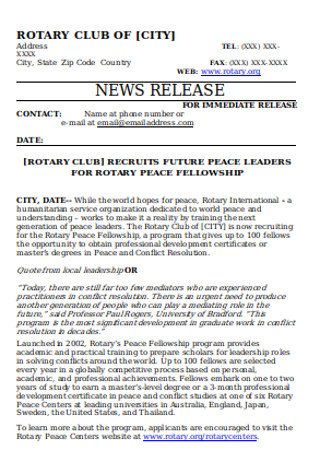
Press News Release Template
download now
FREE Press Release s to Download
Press Release Format
Press Release Samples
What Is a Press Release?
Why Is a Press Release Good for Business?
Six Types of Press Releases to Try
How to Create a Press Release?
FAQS
What makes a press release newsworthy?
How often should a company issue press releases?
What are common mistakes to avoid in a press release?
Can small businesses issue press releases?
How do journalists decide whether to cover a press release?
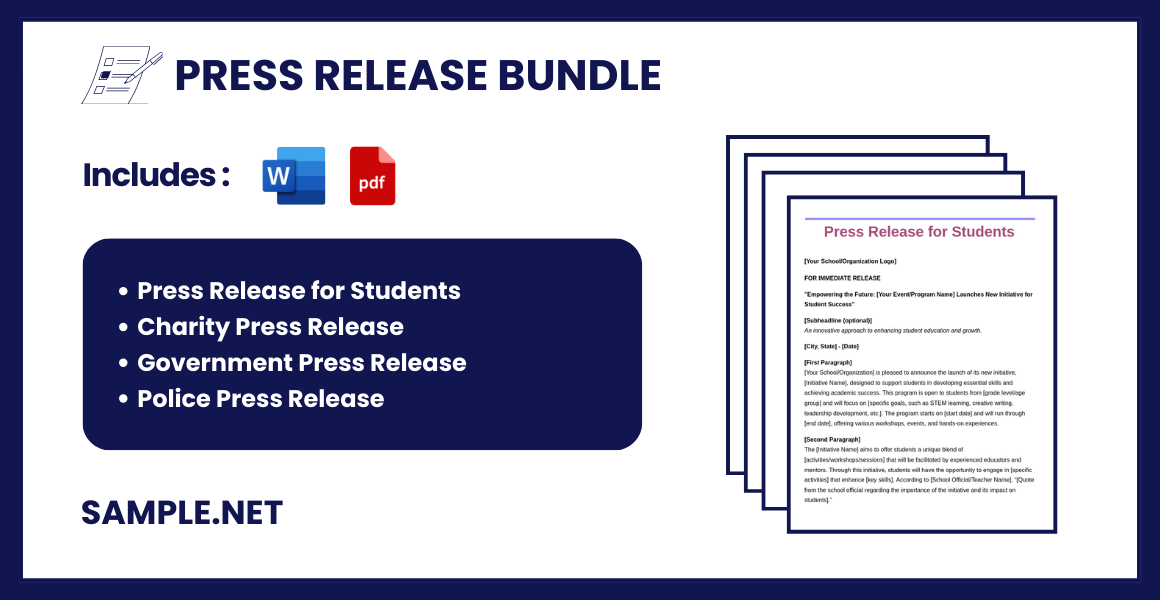
Press Release Format
[Your Company Logo or Letterhead]
FOR IMMEDIATE RELEASE
[Headline]
Concise and attention-grabbing statement summarizing the news.
[Subheadline (optional)]
A brief additional detail to support the headline.
[City, State] – [Date]
The location and the release date of the press release.
[First Paragraph]
This paragraph should contain the core news information: the “who,” “what,” “when,” “where,” “why,” and “how.” Aim to provide the most critical information here, as it sets the stage for the rest of the release.
[Second Paragraph]
Provide supporting details, background information, and any key statistics. You can also introduce relevant quotes from company executives, stakeholders, or partners to add authority to the release.
[Third Paragraph]
Further details, such as additional context or implications of the news. If applicable, include quotes from industry experts or influencers.
[Fourth Paragraph] (Optional)
Highlight any related information, such as upcoming events, additional product launches, or partnerships that are connected to the main announcement.
[Boilerplate]
Include a short company description, often referred to as a “boilerplate,” at the end of the release. It should be around 2-3 sentences that describe your company’s background, services, and unique offerings.
[Contact Information]
Name: [Full Name]
Position: [Job Title]
Company: [Your Company Name]
Phone: [Contact Number]
Email: [Contact Email]
Website: [Company Website URL]
What Is a Press Release?
A press release is an official statement issued to the media to announce news or events. It provides essential information about new developments, product launches, or updates. It’s designed to generate media coverage and public awareness. Key elements include a headline, body, and contact info. Press releases help organizations share news quickly and boost credibility.
Why Is a Press Release Good for Business?
Not every organization has the resources and connections to boost its brand awareness in a competitive market, even more so with its limited business budget. But this only drives you to be more creative with your approach to marketing.
Fortunately, press releases make it easy for small and medium business owners to spread the word about their company and its offers without draining their wallets. It provides instant exposure with the help of content that people care enough about to discuss out in the open. It even offers you the opportunity to enhance your marketing plan by incorporating modern approaches, especially at a time when getting your message out to audiences on different platforms is more crucial than ever. In return, you increase traffic to your website and generate more sales leads as you continue to reach prospects from various channels.
Six Types of Press Releases to Try
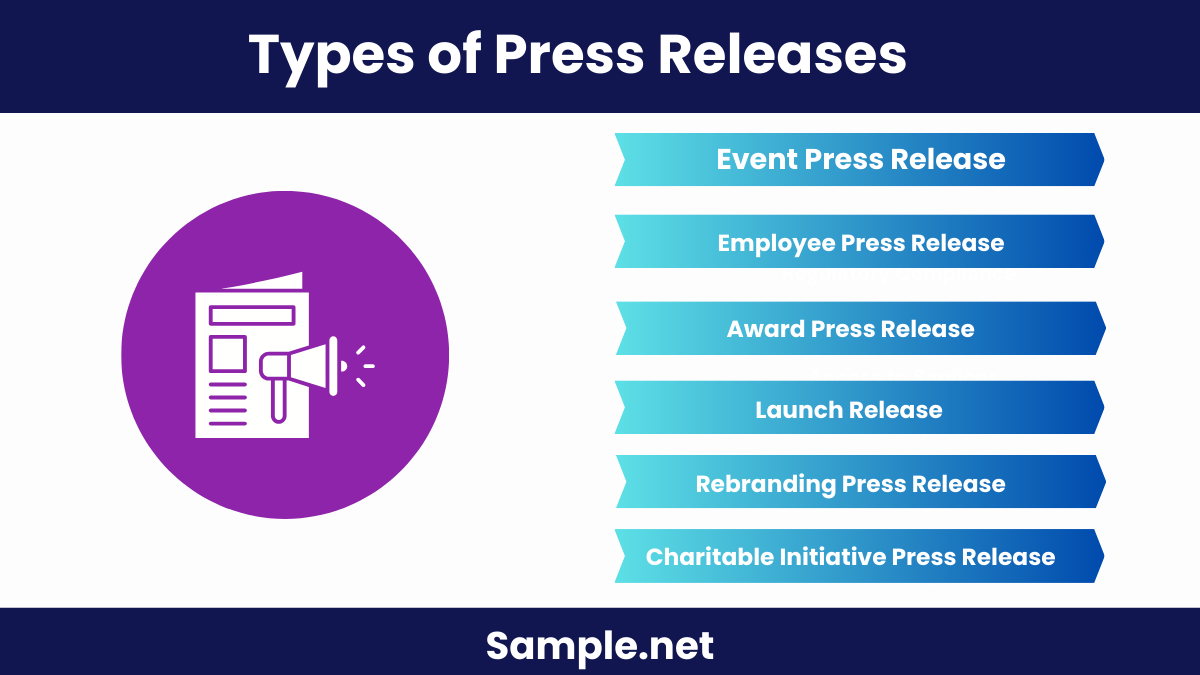
In case you didn’t know, there’s a press release for every kind of business announcement you want to make. Whether you get an outstanding award for your performance or have an impressive new hire you want to boast about, you’ll find a press release that meets your exact marketing needs. You can also more on Press Release Fact Sheet. To know more about press releases, here’s a quick rundown of each type:
How to Create a Press Release?
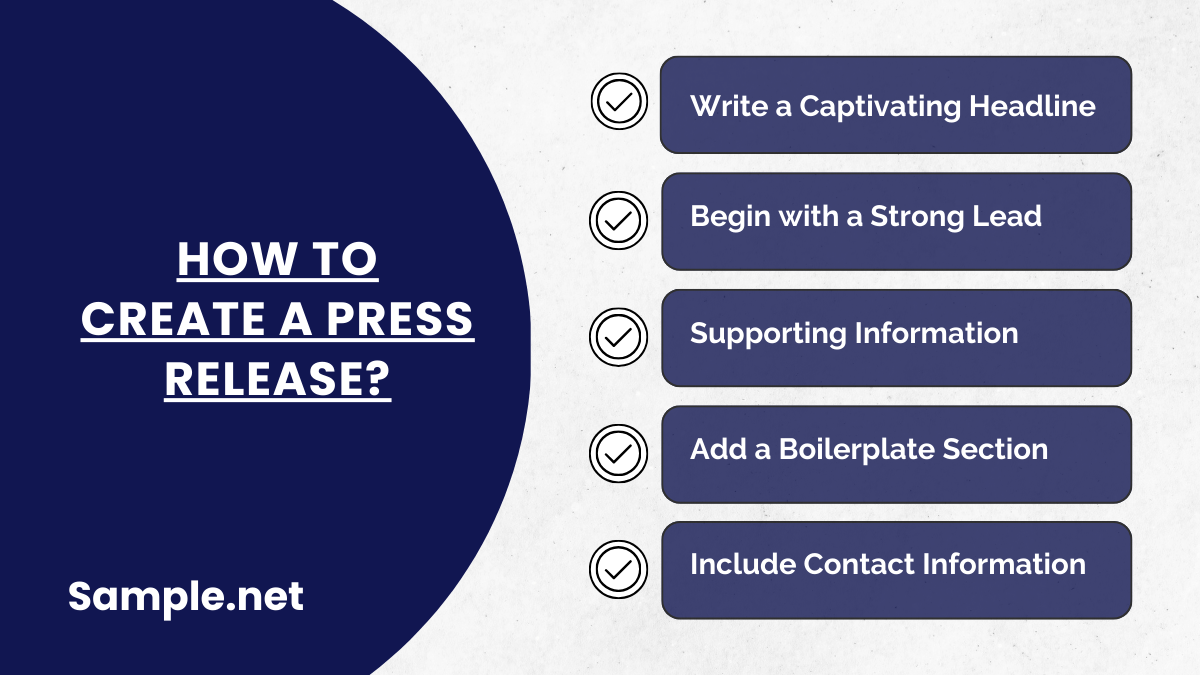
Refer to the following guidelines when drafting a press release for your business.
1. Write a Captivating Headline:
- Start with a compelling headline that clearly conveys the main message.
- Keep it short, attention-grabbing, and newsworthy to make an impact.
- Use action-oriented language to engage readers instantly.
2. Begin with a Strong Lead:
- The lead paragraph should provide the most critical information.
- Answer the “who, what, when, where, why, and how” of the news.
- Keep it concise and clear to ensure the audience understands the announcement.
3. Include Supporting Information:
- Add details, statistics, quotes, or background to provide depth to the story.
- Use bullet points or short paragraphs to maintain readability.
- Ensure accuracy and relevance of all information presented.
4. Add a Boilerplate Section:
- Write a brief “about us” section describing the company’s mission and values.
- It should be consistent across all press releases for branding purposes.
- Include a link to the company’s website for more information.
5. Include Contact Information:
- Add the contact details of the person handling press inquiries.
- Ensure the contact info is accurate and up-to-date, including name, email, and phone number.
- Include links to the company’s social media channels for additional engagement.
A well-crafted press release is a powerful communication tool for businesses. It helps convey important news, attract media attention, and manage public perception. By following the right format and delivering clear, concise, and compelling information, businesses can boost their credibility and visibility. You can also see more on Press Reports.
FAQS
What makes a press release newsworthy?
It should include timely, relevant, and impactful information that appeals to the target audience or media.
How often should a company issue press releases?
Whenever there’s newsworthy information, such as product launches, partnerships, or major events.
What are common mistakes to avoid in a press release?
Avoid jargon, unclear headlines, and overhyping the news. Ensure factual accuracy and include complete contact details. Keep the language clear and concise for better readability.
Can small businesses issue press releases?
Yes, small businesses can use press releases to announce news, build credibility, and gain media attention. It’s an effective marketing tool regardless of company size. Target local and niche media for better reach.
How do journalists decide whether to cover a press release?
Journalists prioritize newsworthiness, relevance, and audience appeal. A clear, concise, and timely release has a better chance of being covered. Including supporting data or quotes also increases its appeal.
